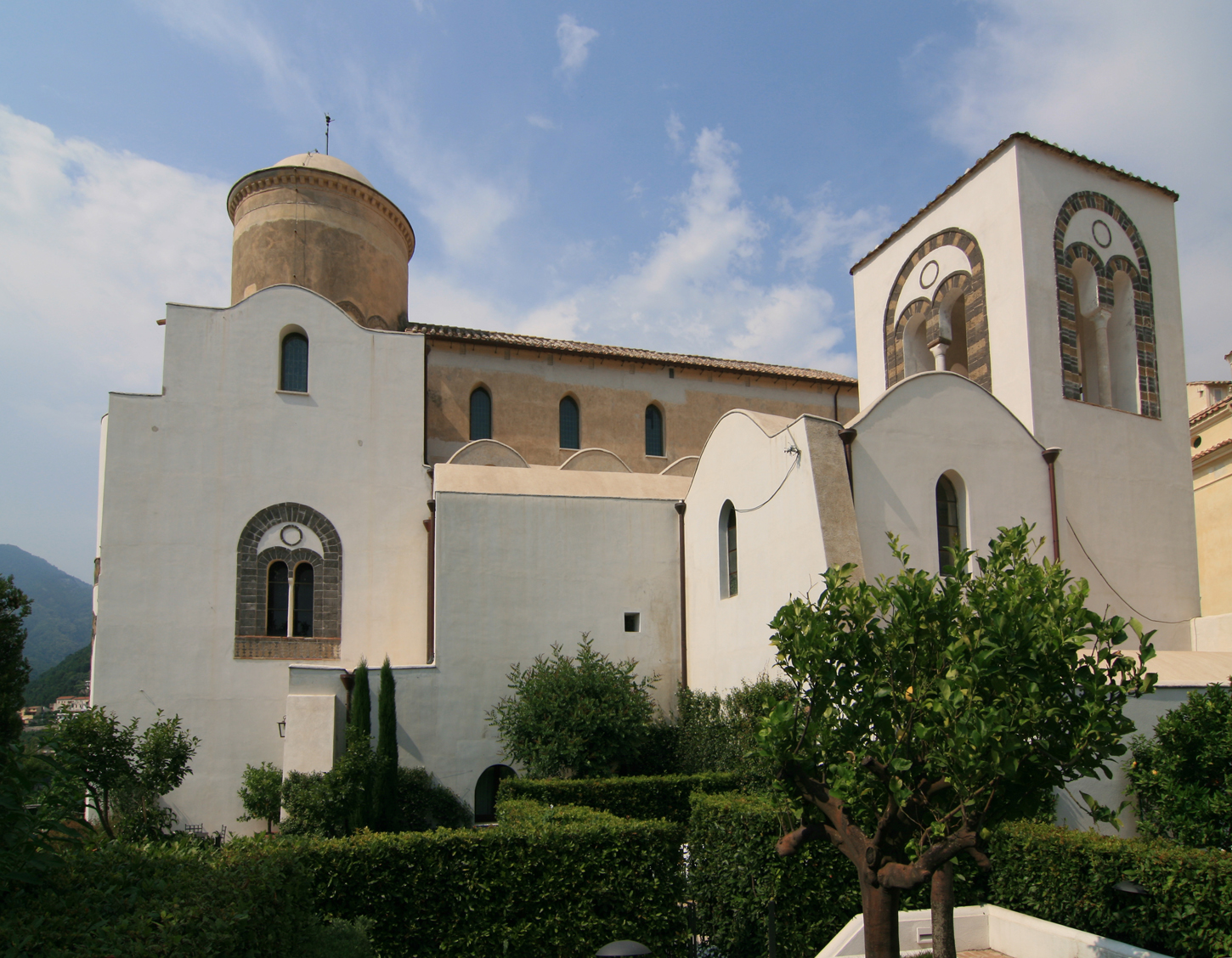San Giovanni Del Toro on:
[Wikipedia]
[Google]
[Amazon]
 The Chiesa di San Giovanni del Toro (
The Chiesa di San Giovanni del Toro (
 The Chiesa di San Giovanni del Toro (
The Chiesa di San Giovanni del Toro (Italian
Italian(s) may refer to:
* Anything of, from, or related to the people of Italy over the centuries
** Italians, an ethnic group or simply a citizen of the Italian Republic or Italian Kingdom
** Italian language, a Romance language
*** Regional Ita ...
: "Church of St. John of the Bull") is a church in Ravello
Ravello (Campanian: ) is a town and ''comune'' situated above the Amalfi Coast in the province of Salerno, Campania, Southern Italy, with approximately 2,500 inhabitants. Its scenic location makes it a popular tourist destination, and earned it a ...
, southern Italy
Italy ( it, Italia ), officially the Italian Republic, ) or the Republic of Italy, is a country in Southern Europe. It is located in the middle of the Mediterranean Sea, and its territory largely coincides with the homonymous geographical re ...
.
History
Consecrated in the 11th century, the church was restored in 1715 after damage caused by an earthquake, and it was restored again in the 1990s. The church is named forJohn the Apostle
John the Apostle ( grc, Ἰωάννης; la, Ioannes ; Ge'ez: ዮሐንስ;) or Saint John the Beloved was one of the Twelve Apostles of Jesus according to the New Testament. Generally listed as the youngest apostle, he was the son of Zebedee a ...
and for "Il Toro", the former name of the old aristocratic quarter in which it was built. It is especially noted for its pulpit, dating from around the 13th century.
Early 20th-century English writers describe the church as in dilapidated condition, stating it would have gone to ruins had it not been for government intervention in the 1880s. According to these authors, who ostensibly derived their knowledge from "an old history," the consecration took place in 1069, and that the church was built by orders of one of the Dukes of Amalfi
Medieval Amalfi was ruled, in the tenth and eleventh centuries, by a series of dukes ( la, duces), sometimes called ''dogi'' (singular: ''doge''), corresponding with the republic of Venice, a maritime rival throughout the Middle Ages. Before the t ...
.
The pulpit
Thepulpit
A pulpit is a raised stand for preachers in a Christian church. The origin of the word is the Latin ''pulpitum'' (platform or staging). The traditional pulpit is raised well above the surrounding floor for audibility and visibility, access ...
is notable for its mosaics, the decorative patterns of which inspired the interlocking patterns used by M.C. Escher
Maurits Cornelis Escher (; 17 June 1898 – 27 March 1972) was a Dutch graphic artist who made mathematically inspired woodcuts, lithographs, and mezzotints.
Despite wide popular interest, Escher was for most of his life neglected in th ...
, who spent time in Ravello in the 1920s and studied the church and the pulpit; Ravello was one of his favorite places. One mosaic is of Jonah
Jonah or Jonas, ''Yōnā'', "dove"; gr, Ἰωνᾶς ''Iōnâs''; ar, يونس ' or '; Latin: ''Ionas'' son of Amittai, is a prophet in the Hebrew Bible and the Quran, from Gath-hepher of the northern kingdom of Israel in about the 8th cent ...
emerging from the whale. An eagle supports the reading desk, and it holds a book opened to the first sentence of the Gospel of John
The Gospel of John ( grc, Εὐαγγέλιον κατὰ Ἰωάννην, translit=Euangélion katà Iōánnēn) is the fourth of the four canonical gospels. It contains a highly schematic account of the ministry of Jesus, with seven "sig ...
. The "beautiful" pulpit, which dates from the time of Roger I of Sicily
Roger I ( it, Ruggero I, Arabic: ''رُجار'', ''Rujār''; Maltese: ''Ruġġieru'', – 22 June 1101), nicknamed Roger Bosso and The Great, was a Norman nobleman who became the first Count of Sicily from 1071 to 1101. He was a member of the H ...
, also contains Oriental pottery ("underglaze-painted and lustre-painted stonepaste bowls, probably Syrian") and Arabic script
The Arabic script is the writing system used for Arabic and several other languages of Asia and Africa. It is the second-most widely used writing system in the world by number of countries using it or a script directly derived from it, and the ...
, and the steps up to it contain well-preserved fresco
Fresco (plural ''frescos'' or ''frescoes'') is a technique of mural painting executed upon freshly laid ("wet") lime plaster. Water is used as the vehicle for the dry-powder pigment to merge with the plaster, and with the setting of the plaste ...
es with scenes from the life of Christ. There is a side chapel with a stucco
Stucco or render is a construction material made of aggregates, a binder, and water. Stucco is applied wet and hardens to a very dense solid. It is used as a decorative coating for walls and ceilings, exterior walls, and as a sculptural and a ...
figure of Saint Catherine and her wheel.
References
Sources
* {{Coord, 40.6514, N, 14.6126, E, source:wikidata, display=title Churches in the province of Salerno Ravello 18th-century Roman Catholic church buildings in Italy Gothic architecture in Italy 11th-century Roman Catholic church buildings in Italy